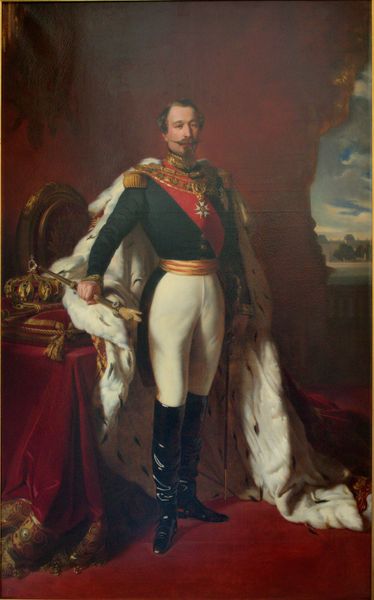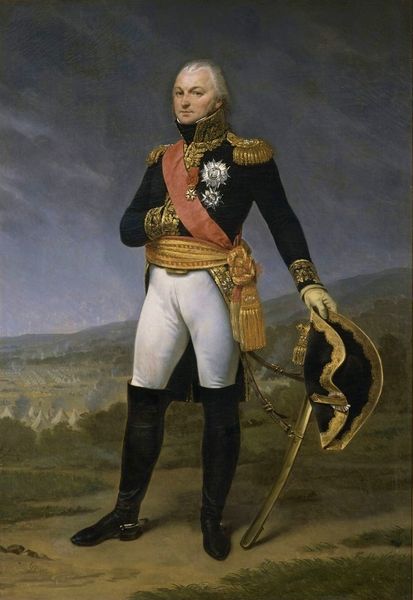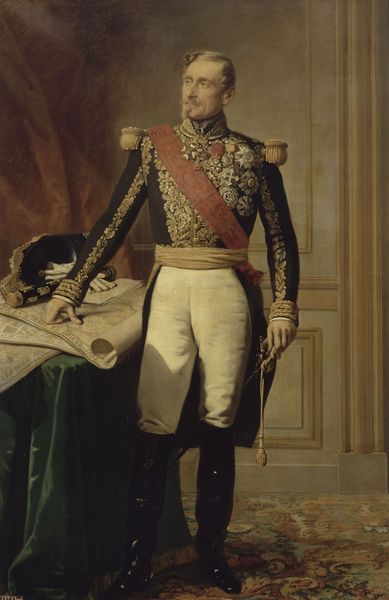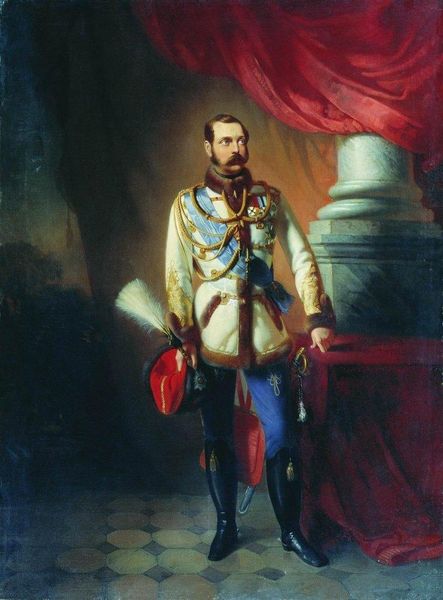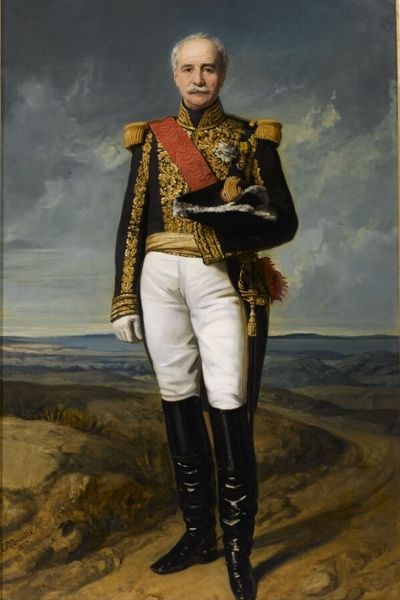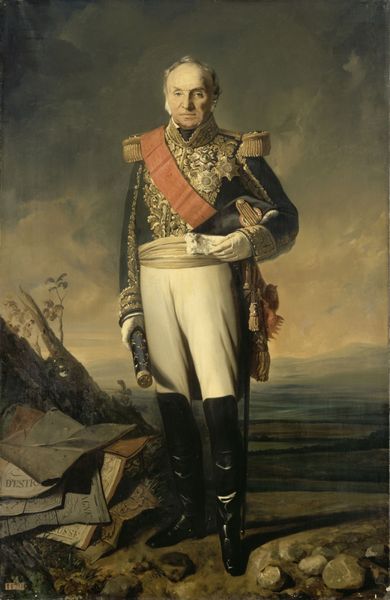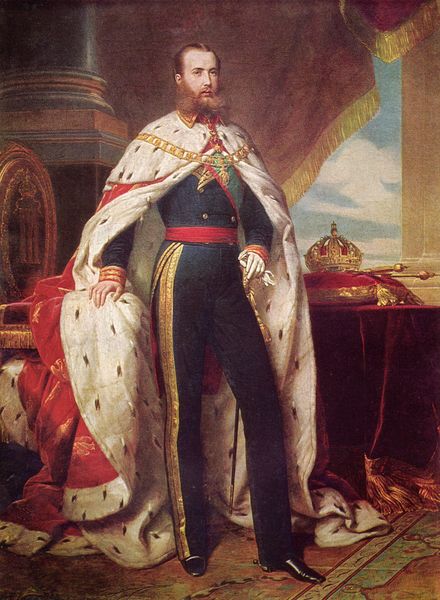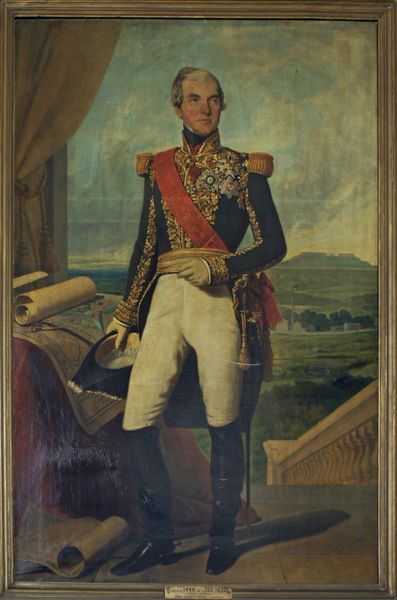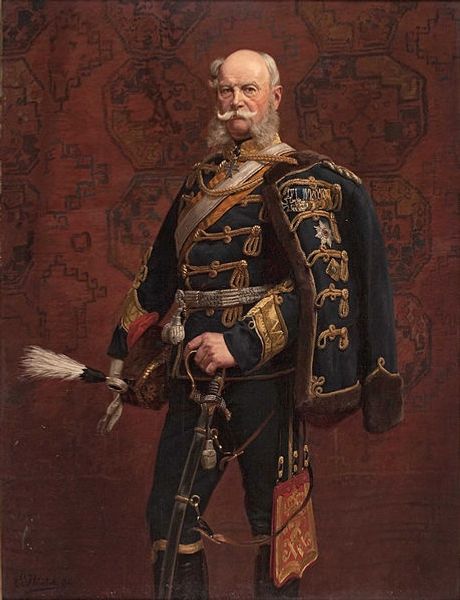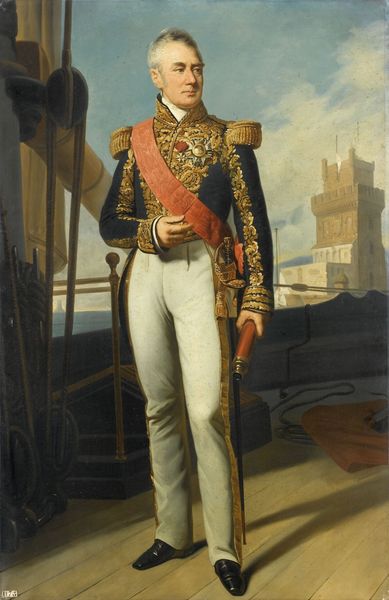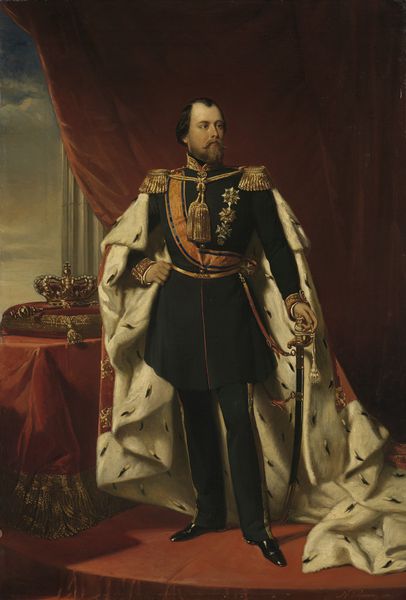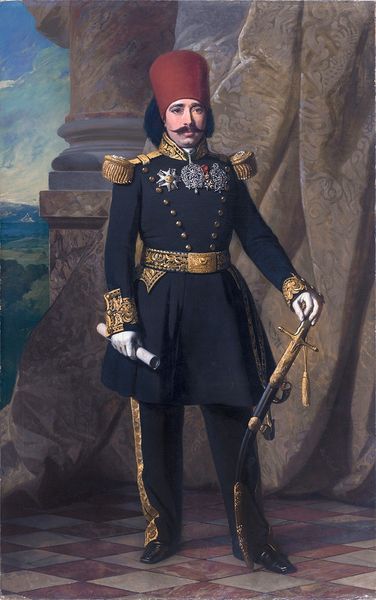
Dimensions: 220 x 125 cm
Copyright: Public domain
Curator: What a striking, almost theatrical portrait. It feels less like a depiction of an individual and more like an emblem. Editor: That’s astute. The canvas before us presents "Auguste Regnaud De Saint Jean D'Angély," rendered in 1860 by Charles-Philippe Larivière. A compelling illustration of how academic art was deployed to reinforce social structures. Curator: Larivière certainly understood the semiotics of power. Observe how the arrangement of the sitter and his accessories create an almost pyramidal composition, directing our gaze toward his face. The light catches the elaborate gold embroidery, drawing our eye deeper into this display. Editor: Exactly! His regalia functions as pure spectacle. Note the map and the drums placed as symbolic foundations beneath him; martial instruments of war transformed into aesthetic objects within a carefully orchestrated portrait of authority. It echoes a visual rhetoric meant to assert imperial might during the Second Empire. Curator: His almost ghostly pale face is sharply in contrast to the intense darkness of his jacket, yet it does not soften the image, but accentuates the rigidity and self-control. What is most impressive, beyond subject representation, is the use of chiaroscuro as a compositional structure. Editor: Agreed, but one cannot divorce it entirely from context. This portrayal exists not only as a study in contrasts, but also a form of legitimization during Napoleon III's reign. It transforms lived, political realities into powerful cultural narratives, contributing to the overall project of empire-building. Curator: So we witness the transition from reality into symbolic authority. His steady and powerful gaze invites us to understand and trust in his decisions. The painter has captured both the tangible uniform and an almost philosophical take on military virtue. Editor: Yes, and in doing so, serves the regime he depicts. Through visual codes and meticulous composition, Larivière not only immortalizes an individual but perpetuates a specific ideology within the socio-political sphere of his time. It compels a viewing audience to not merely look, but to recognize power and authority. Curator: It makes me want to spend more time deciphering what this portrait communicates through form and symbolism. Editor: Indeed. This piece challenges us to look beyond appearances, prompting inquiry into art's multifaceted role during moments of profound societal change.
Comments
No comments
Be the first to comment and join the conversation on the ultimate creative platform.
